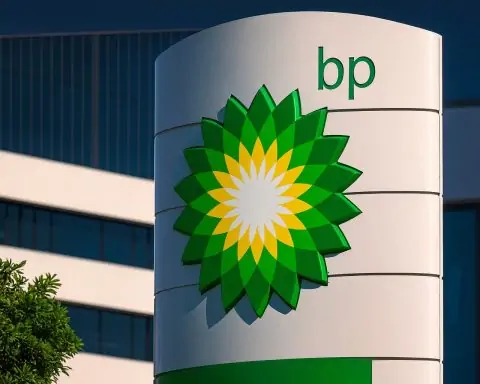Oil prices fell sharply again on Friday, November 21, 2025, extending a three‑day losing streak and dragging benchmarks to around four‑year lows as traders reacted to possible peace talks between Russia and Ukraine, fresh U.S. sanctions on Russian oil majors, and mounting fears of a global supply glut.
By late morning in Europe, Brent crude futures were trading around $62 a barrel, while U.S. West Texas Intermediate (WTI) hovered just under $58, down roughly 2% on the day and on course for weekly losses of about 3–4%. [1]
Both benchmarks are now roughly 15–25% below their peaks from early 2025 and close to the lowest levels seen since 2021, according to market data and independent price trackers. [2]
Snapshot: Oil Prices on 21 November 2025
Different price services quote slightly different intraday levels, but today’s trading range is tightly clustered:
- Brent crude (global benchmark)
- Around $62.0–62.5 per barrel through the European morning
- Roughly 1.5–2.2% lower than Thursday’s close [3]
- WTI crude (U.S. benchmark)
- Trading around $57.5–58.0 per barrel
- Down about 1.8–2.5% on the day [4]
Price services such as Trading Economics and other real‑time platforms also show Brent near $62.4 and “Crude Oil” (WTI) near $57.9, confirming the broad picture of a market grinding lower. [5]
Several commentators describe these levels as fresh four‑year lows, after a steady slide from above $80 per barrel at the start of 2025. [6]
Why Oil Prices Are Falling Today
Today’s move is not about a single headline. Instead, it’s a convergence of geopolitical shifts, macroeconomic worries, and supply‑demand fundamentals.
1. Russia–Ukraine Peace Push Erodes the War Risk Premium
Oil markets have carried a “war premium” since Russia’s invasion of Ukraine, reflecting fears of prolonged supply disruptions. That premium is being squeezed.
- U.S.-drafted peace plan: Reports from Reuters and Bloomberg say Washington has circulated a draft peace framework to Kyiv and Moscow aimed at ending the three‑year war. Ukrainian President Volodymyr Zelenskiy has signaled a willingness to work with the U.S. on that plan. [7]
- Market reaction: In London trade on Friday, Brent fell more than 2% to around $61.98, while WTI slipped to about $57.5, as traders priced in the possibility that a peace deal could eventually restore more predictable Russian exports and reduce geopolitical risk in energy markets. [8]
Even though no agreement is guaranteed, analysts quoted across multiple outlets caution that even the possibility of a peace deal is enough to shave off some of crude’s risk premium and tilt sentiment bearish. [9]
2. New U.S. Sanctions on Rosneft and Lukoil Add Complexity
At the same time, U.S. sanctions on Russian oil giants Rosneft and Lukoil formally take effect today, adding a new twist. [10]
- The sanctions target the two companies and their majority‑owned subsidiaries, complicating financing, shipping, and insurance for barrels linked to them. [11]
- India, now one of Russia’s biggest crude buyers, is expected to sharply reduce direct purchases from Rosneft and Lukoil because of exposure to U.S. secondary sanctions, though Indian refiners may still access some Russian crude via non‑sanctioned intermediaries and more opaque trading routes. [12]
In theory this should support prices by tightening supply. But several analysts note that:
- Russia has a track record of rerouting flows via “shadow” fleets and intermediaries.
- Other OPEC+ members, U.S. shale producers and non‑OPEC suppliers like Brazil are already shipping more barrels into the market. [13]
The result: markets see the sanctions as messy but not (yet) a severe supply shock, especially if peace efforts succeed in stabilizing the region.
3. Oversupply Fears and the 2026 “Glut” Debate
Underlying today’s sell‑off is a growing consensus that supply is running ahead of demand:
- The International Energy Agency’s November Oil Market Report says global oil demand grew by roughly 790,000 barrels per day (b/d) in 2025, with similar growth expected in 2026 — modest by historic standards. [14]
- At the same time, analysts and industry trackers estimate that global production has risen by more than 6 million b/d since January, split between OPEC+ and non‑OPEC producers, driven by higher output in North America, Brazil, and parts of the Middle East. [15]
- An Al Jazeera economics program this week highlighted IEA projections of a significant surplus in 2026, even as OPEC+ insists the market will remain “balanced.” [16]
OPEC+ has tried to lean against the glut narrative. In early November, the group agreed to:
- Raise December output targets by a modest 137,000 b/d,
- Then pause further increases in the first quarter of 2026, explicitly citing supply‑glut concerns. [17]
However, with Brent hovering near $62 despite those steps, traders appear unconvinced that the cuts so far are enough to clear looming surpluses.
4. Stronger Dollar and Fading Fed Rate-Cut Hopes
Macro conditions are also leaning against crude:
- The U.S. dollar is heading for its strongest week in more than a month, as money markets sharply dial back expectations of a Federal Reserve rate cut in December — from about 90% a month ago to roughly 35% today. [18]
- A stronger dollar makes dollar‑priced commodities like oil more expensive for holders of other currencies, typically dampening demand. [19]
Commentary from macro‑focused outlets notes that investors are in “risk‑off” mode, selling stocks, high‑yield assets, and commodities in tandem as they reassess how long higher rates may persist into 2026. [20]
5. U.S. Inventory Data: Bullish on Crude, Bearish on Products
Fundamentally, U.S. inventory data this week was mildly supportive for crude — but not enough to offset the bearish macro picture.
The latest weekly report from the U.S. Energy Information Administration (EIA), as summarized by Rigzone, showed that: [21]
- Commercial crude stocks (excluding the SPR) fell by 3.4 million barrels in the week to November 14, to about 424 million barrels.
- That leaves U.S. crude inventories roughly 5% below their five‑year seasonal average — normally a supportive signal for prices.
- However, gasoline and distillate inventories ticked higher, suggesting soft road‑fuel demand and some loosening on the products side.
Analysts described the report as showing a “tighter crude balance but softer product demand” — hardly the recipe for a sustained rally when traders are already fretting about 2026 oversupply.
How Today’s Oil Price Affects Consumers and Businesses
Cheaper Fuel and Some Relief on Inflation
For households and transport‑heavy sectors, sub‑$60 WTI and low‑$60s Brent are good news:
- Historically, crude at these levels filters through to lower gasoline and diesel prices within weeks, especially in the U.S. and parts of Europe where taxes are relatively stable.
- Analysts cited in recent market commentary estimate that the latest drop in crude could shave 10–15 cents per gallon off U.S. pump prices if current levels persist, offering incremental relief to inflation‑weary consumers. [22]
Lower fuel costs also benefit:
- Airlines, shipping firms and logistics companies, which have seen margins squeezed by high energy costs since 2022.
- Retailers and e‑commerce platforms, via cheaper freight and last‑mile delivery.
Tougher Economics for Producers and Energy Stocks
The flip side: today’s oil price is painful for many producers.
- Trade press reports suggest that numerous U.S. shale projects struggle to generate attractive returns below about $60 per barrel, particularly in higher‑cost basins. [23]
- Some energy majors have already flagged slower production growth in 2026 if prices remain at or below current levels, even while trying to keep investor payouts steady through dividends and buybacks. [24]
The broader energy sector has been volatile all week, with equity indices tracking oil prices lower as investors reassess earnings forecasts for 2026 under a “lower for longer” price scenario. [25]
Big Importers Like India Face a Strategic Re‑Shuffle
Countries heavily dependent on imported crude are juggling price advantages against geopolitical pressure:
- India, which has become a major buyer of discounted Russian oil, now faces tighter constraints as sanctions on Rosneft and Lukoil bite.
- Data and analysis cited by Indian media suggest that refiners will initially cut direct purchases from sanctioned entities, while seeking alternative barrels from the Middle East, Latin America, West Africa and North America — and possibly more opaque Russian supplies routed through intermediaries. [26]
The short‑term impact is likely to be higher logistical complexity rather than outright shortages, but over time such shifts could alter regional pricing dynamics and freight costs.
Technical View: Key Levels Traders Are Watching
Beyond fundamentals, chart‑watchers say the technical picture for crude has turned decisively bearish:
- Analysts at FXEmpire and other trading‑focused outlets note that both WTI and Brent have broken down from recent consolidation patterns, with prices now printing a series of lower highs and lower lows — a classic downtrend structure. [27]
- For WTI, key downside levels being watched include $57.4 and then the $56 area, which has acted as support several times this year. A sustained move back above about $59–59.2 would be the first sign of stabilizing demand. [28]
- For Brent, technicians flag support around $62–62.0 and then closer to $60, with resistance now forming near $63.8–65.0. As long as Brent stays below that band, rallies are seen as vulnerable to renewed selling. [29]
The message from the charts: unless a fresh catalyst emerges — whether geopolitical or economic — momentum currently favors the bears.
Short-Term Outlook: What to Watch After Today
Looking beyond today’s close, several key themes will shape the next leg for oil prices:
- Progress (or Breakdown) in Russia–Ukraine Peace Efforts
Any concrete steps toward a ceasefire or formal agreement could further strip out the war risk premium. Conversely, if talks stall or fighting escalates, crude could quickly regain some geopolitical support. [30] - Real‑World Impact of U.S. Sanctions on Russian Flows
Markets will monitor how much Russian export volume actually disappears versus being rerouted through less transparent channels — including to India and other Asian buyers. [31] - Upcoming OPEC+ Meetings and Compliance
With the group already slowing its planned output hikes and signaling a pause for early 2026, traders will scrutinize compliance data and any hint of deeper cuts if prices remain under pressure. [32] - U.S. Federal Reserve and the Dollar
The Fed’s December meeting and the path of U.S. interest rates will be crucial for both global growth expectations and the dollar, two variables that heavily influence oil demand and investor appetite for commodities. [33] - Demand Signals from China, Europe and Emerging Markets
Weak industrial activity or consumer demand, especially in China and Europe, could reinforce the glut narrative. Any upside surprises — for example, stronger travel data or new stimulus — might help put a floor under prices. [34]
For now, the balance of evidence points to an oil market tilted toward oversupply, with prices under pressure from both improved geopolitical visibility and a less dovish central‑bank outlook. Unless that calculus changes, traders and policymakers alike may need to get used to Brent in the low‑$60s and WTI in the high‑$50s as the new normal — at least heading into the start of 2026.
Quick FAQ: Oil Prices Today (21 November 2025)
What is the Brent oil price today, 21 November 2025?
Brent crude has traded around $62 per barrel, with most price services quoting levels between about $61.9 and $62.5during Friday’s European session. [35]
What is today’s WTI crude price?
WTI crude has been quoted in the $57.5–58.0 per barrel range, down roughly 2% from Thursday’s close and on track for a third straight daily decline. [36]
Why are oil prices falling today?
The drop reflects hopes for a Russia–Ukraine peace deal, new yet manageable sanctions on Russian oil giants, worries about a 2026 supply glut, a stronger U.S. dollar as Fed rate‑cut hopes fade, and an EIA report showing only modest U.S. crude stock draws alongside soft product demand. [37]
References
1. www.reuters.com, 2. www.polyestertime.com, 3. www.reuters.com, 4. www.reuters.com, 5. tradingeconomics.com, 6. www.polyestertime.com, 7. www.reuters.com, 8. www.reuters.com, 9. www.reuters.com, 10. www.reuters.com, 11. timesofindia.indiatimes.com, 12. timesofindia.indiatimes.com, 13. www.polyestertime.com, 14. www.iea.org, 15. www.polyestertime.com, 16. www.aljazeera.com, 17. www.reuters.com, 18. www.reuters.com, 19. dmarketforces.com, 20. markets.financialcontent.com, 21. www.rigzone.com, 22. www.polyestertime.com, 23. www.polyestertime.com, 24. www.polyestertime.com, 25. markets.financialcontent.com, 26. timesofindia.indiatimes.com, 27. www.fxempire.com, 28. www.fxempire.com, 29. www.fxempire.com, 30. www.reuters.com, 31. timesofindia.indiatimes.com, 32. www.reuters.com, 33. dmarketforces.com, 34. www.iea.org, 35. www.reuters.com, 36. www.reuters.com, 37. www.reuters.com










